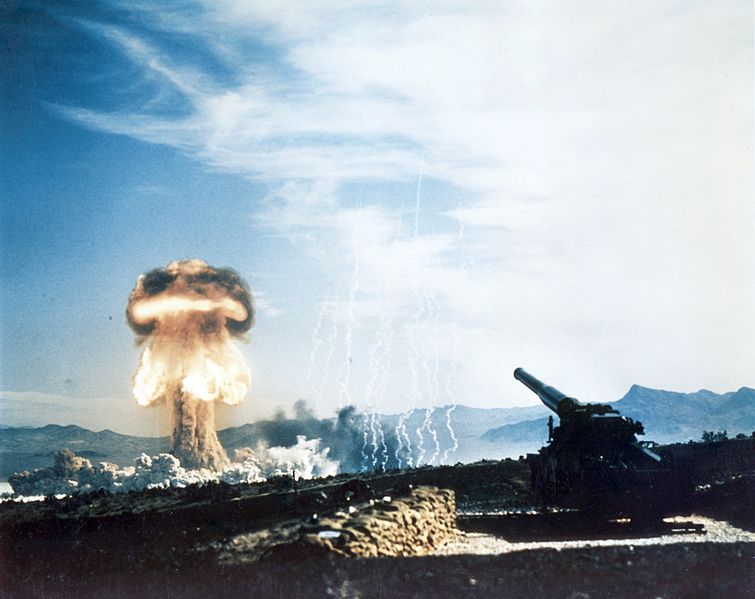 From the late 1940s until the fall of the Berlin Wall, the two superpowers engaged in a standoff whereby each threatened the very existence of the other with tens of thousands of strategic nuclear warheads. This perilous situation created powerful incentives on both sides to exercise control over their nuclear arsenals, and to cooperate on agreed areas of mutual interest in order to prevent a nuclear apocalypse.
From the late 1940s until the fall of the Berlin Wall, the two superpowers engaged in a standoff whereby each threatened the very existence of the other with tens of thousands of strategic nuclear warheads. This perilous situation created powerful incentives on both sides to exercise control over their nuclear arsenals, and to cooperate on agreed areas of mutual interest in order to prevent a nuclear apocalypse.
If we compare the Cold War situation to what exists today, we can see that nuclear dynamics are now far more complex. No longer is it two nations of comparable size squaring off over the same geography. Today’s nuclear relationships consist of both the traditional P5 nuclear-weapon states (US, Russia, UK, France, China) as well as newer and emerging nuclear powers (Israel, India, Pakistan, North Korea) that are locked in bitter and unbalanced strategic rivalries with neighbours.
This new nuclear puzzle, consisting of multiple interlocking components of differing sizes and objectives, has immeasurably complicated the dilemmas inherent in nuclear arms control. A ‘wicked problem’ now exists which makes progress towards disarmament much more difficult, and dramatically increases the probability of a nuclear proliferation cascade in the future.
Many non-nuclear-armed states criticise the US and Russia for not disarming quickly enough, while US allies resist any movement towards nuclear arms reduction that could be perceived as weakening extended deterrence. Comparatively weak states such as Pakistan, North Korea, and possibly Iran are seeking new nuclear weapons to insulate themselves against potential adversaries that possess vastly superior conventional forces. At the same time, China is continuing to re-emerge as a great power, and seeks to maintain a credible second-strike capacity in the wake of proliferating ballistic missile defence systems in Asia. Finally, Russia is chaffing under nuclear agreements it made in the past that constrain its nuclear arsenal at a time when it’s surrounded by NATO on its western border, and nuclear-armed states that aren’t similarly constrained to its south and east.
Further advances in nuclear arms control need to account for all these intersecting strategic complications, while still materially strengthening international security. The most likely scenario for the first use of nuclear weapons no longer consists of a massive nuclear exchange between the US and Russia, but rather a nuclear response by a less powerful state to overwhelming conventional force in a battlefield situation. Any such use is likely to escalate very rapidly up to the strategic level, especially if the conflict is directly between nuclear powers.
As explained in both our new ASPI Insight paper, and in a longer companion study (PDF), the path forward must account for all of these complicating factors. One option for advancing nuclear arms control is a new treaty that bans nuclear weapons with an explosive power small enough to be used readily on the battlefield. Such a treaty would prohibit the development and possession of any nuclear weapon with a design yield below 5 kilotons. This would reduce the risk of nuclear conflict and the role of nuclear weapons, while still strengthening the national security of each state party to the treaty.
Furthermore, such a treaty accounts for all of the major factors presented by the wicked problem. The United States would continue progress on disarmament without compromising the credibility of nuclear assurances it extends to its allies; Russia would achieve the multilateral inclusion of all nuclear-armed states in arms control reductions; and China would benefit from the restraint applied to the nuclear arsenals of potential adversaries without compromising its own strategic second-strike potential.
A failure by a few nuclear-armed states (Israel, Pakistan and North Korea) to ratify the treaty wouldn’t inhibit the effectiveness of a treaty banning low-yield weapons that had achieved near universality. In a world where low-yield weapons had become uniquely taboo, any potential user of low-yield weapons would be forced to consider that nuclear retaliation against such use would be more likely to be seen as justified. So the treaty’s existence would help to restrain nuclear use, even by non-parties, and improve strategic stability between nuclear-armed rivals such as Pakistan and India.
Australia is affected by several aspects of the nuclear wicked problem. On one hand, it’s a non-nuclear-weapon state with excellent non-proliferation and disarmament credentials. On the other, Australia is a close US ally reliant on extended nuclear deterrence. Australia therefore stands to benefit from a treaty banning low-yield weapons, and is well placed—especially while currently a United Nations Security Council member—to build a coalition with other like-minded states. For this purpose, Australia could utilise the ministerial-level group, the Non-Proliferation and Disarmament Initiative (NPDI), take the lead in formulating a draft text, and bring it before the United Nations for signature and ratification.
Crispin Rovere and Kalman A Robertson are at the ANU’s School of International, Political & Strategic Studies and are the authors of the ASPI Policy Paper ‘Non-strategic nuclear weapons: the next step in multilateral arms control’. Image courtesy of Wikimedia Commons.

